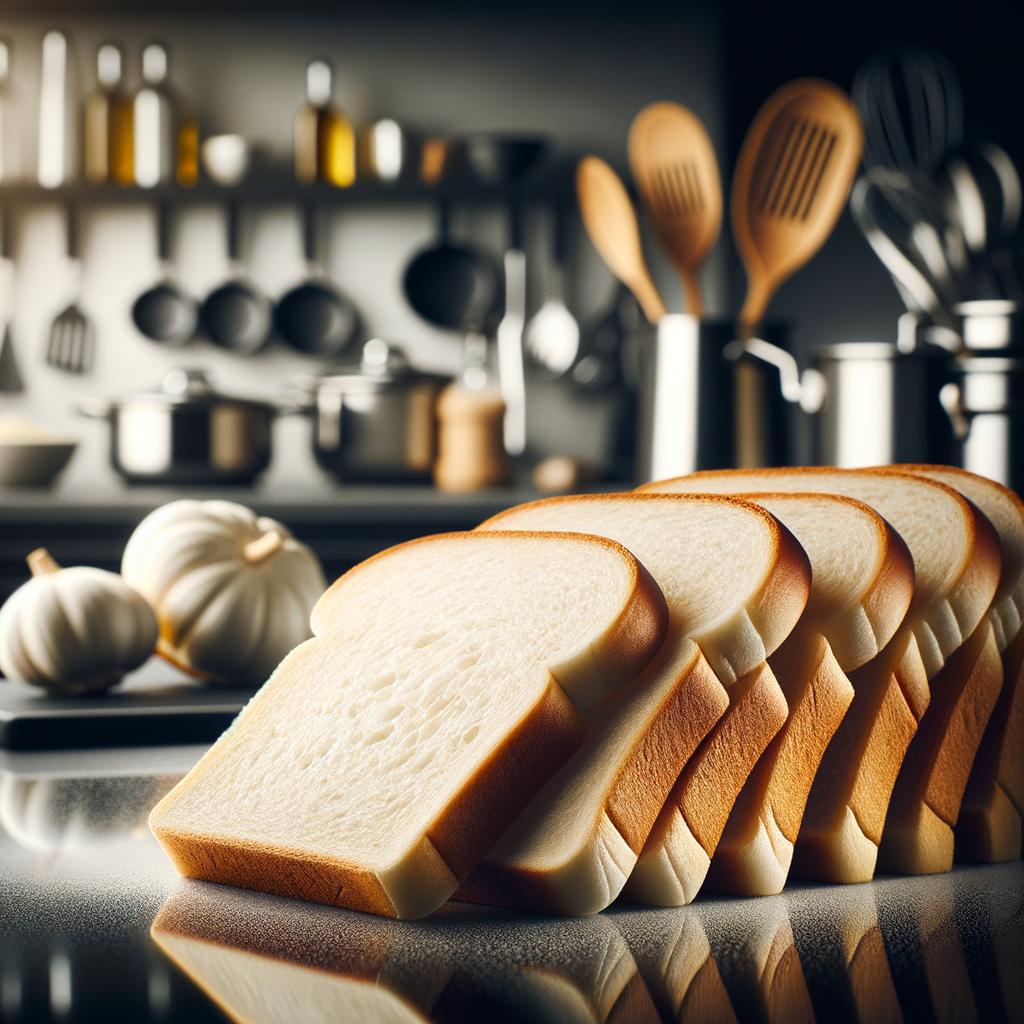White Bread Slices

Description White bread slices, a staple in many households, are soft, fluffy, and subtly sweet. The slices are typically rectangular, with a smooth, slightly crusty exterior and a tender, airy interior. The flavor profile is mild, with a hint of yeast and a gentle sweetness that makes it a versatile food item. What sets white bread apart from its whole grain counterparts is its refined texture and lighter flavor, achieved by using refined wheat flour, which has the bran and germ removed.
Primary Uses White bread slices are a culinary chameleon, seamlessly integrating into a plethora of dishes across various cuisines. They are commonly used in sandwiches, from the classic PB&J to the gourmet club sandwich, and are a key component in comfort foods like grilled cheese and French toast. In addition, they are often used to make croutons for salads and breadcrumbs for coating or binding. Beyond culinary uses, white bread has a unique role in art and craft projects for children, and folklore suggests it as a remedy for picking up broken glass.
History The history of white bread is a tale of prestige and practicality. In the ancient world, white bread was consumed by the elite, as the process to refine flour was labor-intensive. With the advent of industrial milling in the 19th century, white bread became accessible to the masses. However, its popularity waned in the late 20th century with the rise of health consciousness, only to be revived in recent years as a nostalgic comfort food. A notable story is the creation of the first sliced white bread by Otto Frederick Rohwedder in 1928, which led to the phrase "the best thing since sliced bread."
Nutritional Information White bread slices are a good source of carbohydrates, the body's primary energy source, and contain small amounts of protein. They are fortified with essential nutrients like iron and B vitamins, including thiamin, riboflavin, and niacin, which are crucial for metabolism and nervous system function. However, compared to whole grain bread, white bread is lower in fiber and certain minerals. While it's a comforting staple, moderation is key due to its high glycemic index, which can impact blood sugar levels.

